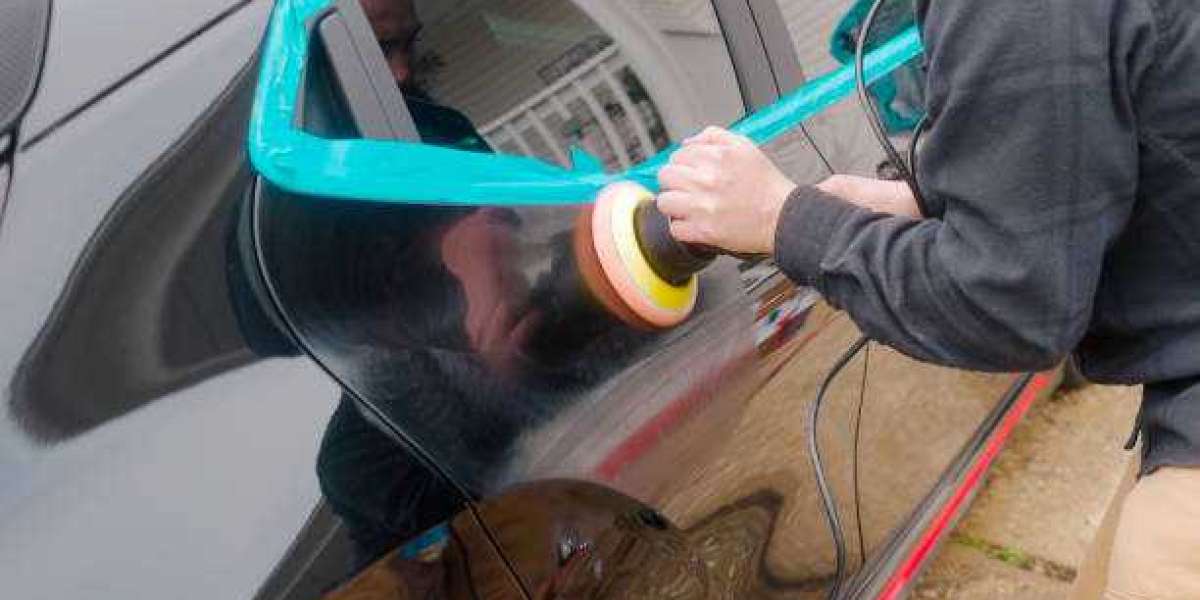Paint correction is a delicate and intricate process that involves restoring a vehicle’s paint to its original, flawless condition. It requires expertise, precision, and the right set of tools to achieve the best results. While many car enthusiasts may attempt to perform paint correction themselves, professional tools are an essential part of ensuring the job is done right. In this article, we’ll explore the importance of using professional tools in paint correction services and why opting for a professional service is often the best choice for your vehicle.
1. Precision and Accuracy
Paint correction involves eliminating imperfections such as swirl marks, scratches, oxidation, and water spots, and restoring the smooth, glossy finish of the vehicle’s paintwork. The key to achieving a flawless finish lies in the precision of the tools used. Professional-grade tools are specifically designed to target specific areas of imperfection without causing further damage to the paint.
- Dual-Action Polishers: One of the most important tools for paint correction is the dual-action polisher. These polishers use a combination of rotational and orbital motion to gently work on the paint surface. Unlike cheaper, entry-level tools that can be too aggressive or inconsistent, professional polishers provide a more controlled process, reducing the risk of creating new imperfections or damaging the paint further.
- Rotary Polishers: For more intensive paint correction, rotary polishers are often used. These machines rotate in a circular motion and are effective in removing deep imperfections. While they require experience to use effectively (as they can generate heat and potentially burn the paint if not handled properly), they provide a high level of precision in skilled hands.
By using these professional-grade tools, detailers can achieve optimal results, maintaining the integrity of the paint while removing imperfections and enhancing the overall appearance.
2. Consistent Results
One of the challenges in paint correction is achieving consistent results across the entire surface of the vehicle. Cheap or poorly-maintained tools can cause inconsistencies in the finish, leaving some areas more polished than others or creating uneven gloss. Professional tools are built to deliver even results across all areas, ensuring a uniform finish that enhances the vehicle’s overall appearance.
- Variable Speed Control: Many professional polishing tools offer adjustable speed controls, which allow technicians to tailor the process based on the specific needs of the paint surface. Lower speeds are used for delicate areas or initial stages of correction, while higher speeds can be employed for more aggressive correction. This versatility ensures a consistent and precise application across all panels.
- Ergonomic Design: Professional tools are often designed for comfort and ease of use, which helps technicians achieve consistent results without experiencing fatigue or discomfort. The ergonomic design of professional tools helps technicians maneuver around the vehicle with precision, ensuring that all areas are treated uniformly.
3. Time Efficiency
Paint correction is a time-consuming process, especially when done correctly. The use of high-quality, professional tools can significantly reduce the time it takes to complete the job. Professional tools are designed to be more efficient than entry-level alternatives, allowing technicians to work faster while still achieving superior results.
- High-Speed Buffing: Professional polishers and buffers can operate at higher speeds, allowing technicians to cover larger surface areas in less time. This results in faster turnaround times for the paint correction service, which means clients don’t have to wait as long for their vehicles to be restored.
- Fewer Touch-Ups: Professional tools can often achieve the desired result in fewer passes, which reduces the likelihood of having to go over areas multiple times. This is particularly beneficial when working on large vehicles, as it speeds up the process and minimizes the amount of time spent correcting imperfections.
4. Safety and Protection of the Paint
One of the main concerns when performing paint correction is ensuring that the vehicle’s paint is not damaged during the process. Overly aggressive tools or poor techniques can result in burning, hazing, or other forms of paint damage. Professional tools are designed with safety in mind, minimizing the risk of causing harm to the paint while providing effective correction.
- Polishing Pads: The type of polishing pad used is just as important as the polisher itself. Professional tools come with a variety of pad options, including foam, microfiber, and wool pads, each designed for specific tasks. These pads are softer and less abrasive than those used in cheaper tools, which helps protect the paint while effectively removing imperfections.
- Heat Control: Professional polishers are equipped with features that help control the amount of heat generated during the correction process. Excessive heat can burn the paint and cause discoloration. High-quality tools are engineered to provide optimal heat management, reducing the risk of damage while still achieving a smooth, glossy finish.
5. Long-Term Durability and Performance
Professional-grade tools are built to last. Unlike budget tools, which may wear out quickly or require frequent maintenance, professional tools are durable and designed for continuous use. This ensures that the paint correction process is done effectively, and the tools are reliable over time.
- Durable Construction: Professional tools are made from high-quality materials that ensure longevity and durability. They are designed to withstand the rigors of continuous use in a professional environment, providing consistent performance for years to come.
- Less Frequent Maintenance: While any tool requires regular maintenance, professional tools tend to require less frequent servicing compared to low-quality alternatives. This reduces the downtime and ensures that the technician can always rely on their equipment to complete paint correction jobs efficiently.
6. Advanced Features for Customization
Many professional paint correction tools offer advanced features that allow technicians to customize the process based on the specific needs of the vehicle’s paintwork. These features enable technicians to provide a highly personalized service that meets the unique requirements of each vehicle.
- Adjustable Pressure Settings: Some professional tools come with pressure-sensing technology, allowing the technician to adjust the pressure applied to the paint. This customization ensures that different areas of the vehicle, such as delicate or high-traffic areas, receive the appropriate level of treatment.
- Specialized Tools for Different Paint Types: Professional detailers often encounter a wide range of paint types, from soft and delicate paints to hard and durable finishes. Professional tools allow technicians to adjust settings or choose the right tools and pads for each type of paint, ensuring optimal results without causing damage.
7. Expert Knowledge and Training
While the tools are an important part of the paint correction process, they’re only effective when used by an experienced technician. Professional tools are designed with advanced features that require expertise to operate properly. An experienced technician knows how to use the tools to their fullest potential, adjusting techniques based on the paint type, level of imperfections, and desired finish.
- Experienced Technicians: Professional paint correction services employ highly skilled technicians who are trained to use advanced tools to achieve the best results. They understand the nuances of the tools and know how to avoid mistakes that could lead to damage.
- Customized Solutions: With the right tools and experience, technicians can offer customized solutions to restore a vehicle’s paint to its original condition. They know when to use specific tools, speeds, and pads to correct the paint and create a flawless finish.
Conclusion
The importance of professional tools in paint correction services cannot be overstated. From providing precision and consistency to ensuring the safety of the paint and improving efficiency, these tools play a critical role in achieving high-quality results. When combined with the expertise of skilled technicians, professional tools deliver a level of service that DIY methods and subpar equipment simply cannot match. For anyone seeking the best possible outcome for their vehicle’s paint, investing in professional paint correction services with the right tools is essential.













